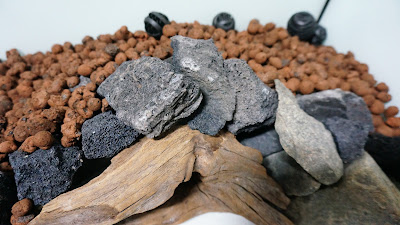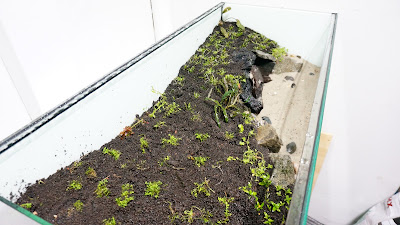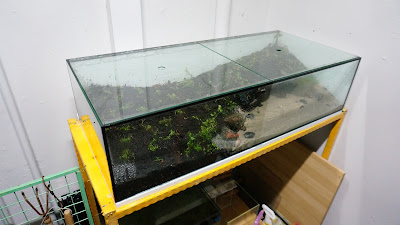I
have been using the OASE BioMaster 600 for almost a year. And guess what? I never needed to bring out the whole filter unit for cleaning or maintenance! Why? Let me jot down some reviews on this filter beast to share with you guys!
😊
 |
| My OASE BioMaster 600 |
First
and foremost, the feature that I really love about my OASE BioMaster is the EasyClean
pre-filter unit. I wish that canister filters would have this pre-filter function. Cleaning works to the filter is done within 5 minutes now with OASE
Biomaster. You just need to turn the filter off, remove the pre-filter from its chamber,
bring it to a sink and clean all pre-filter sponges and assemble it back to the
filter. Voilà! It is extremely easy and convenient! You don’t even need to prime
the filter again to let the filter run. For almost the whole year I only needed to
clean that pre-filter without moving the whole filter out of the cabinet and it will go on. In my
opinion, that feature alone is tempting enough to any aquarium owner. 😉
 |
| My favourite pre-filter part is that big blue "button"on the left. It also works as a prime button, super convenient. |
Another
interesting feature about the filter’s design is its foolproof mechanism.
It is so well designed and easy to operate that users can hardly assemble / disassemble it wrongly.
 |
| Foolproof locking mechanism |
The filter volume is large (i.e. 6.8L), even though its footprint is compact. Thanks to the narrow shape, it can fit in most cabinets nicely without taking up much space. The original media (i.e. plastic Hel-X) and lots of sponge filters that come with OASE BioMaster are however not so impressive to me. I replaced those with other more effective bio-media anyway. By doing so, I can make use of the large volume filter media more effeciently.
 |
| Small foot print, yet large in filter volume design. |
Filter flowrate is quite decent at 1,250L/hr. However, due to the fine pre-filter sponge (i.e. 45ppi), flow is somehow reduced quicker if pre-filter is clogged. So whenever I see a sign of flow reduction, I know it is time to clean the pre-filter, then after the process everything is like new again. That point is certainly a “give-and-take” and I am willing to trade-off with the ease of maintenance.
Last but not least, the filter is also very quiet while operating thanks to the rubber dampers at the bottom of filter. When my cabinet is closed, the filter is totally quiet. This characteristic is important to me since my planted tank is the center decoration piece in my living room. 😊
 |
| OASE BioMaster 600, one of my most favourite canister filters |
Overall,
I am very satisfied with OASE BioMaster 600 and this is one of the my favorite
canister filters so far. For those who are always procrastinating in maintaining the
filter (like me some times), you would love this masterpiece! 😊
Purchase Link of OASE BioMaster 600 on Amazon: https://amzn.to/2yFiilr




























































